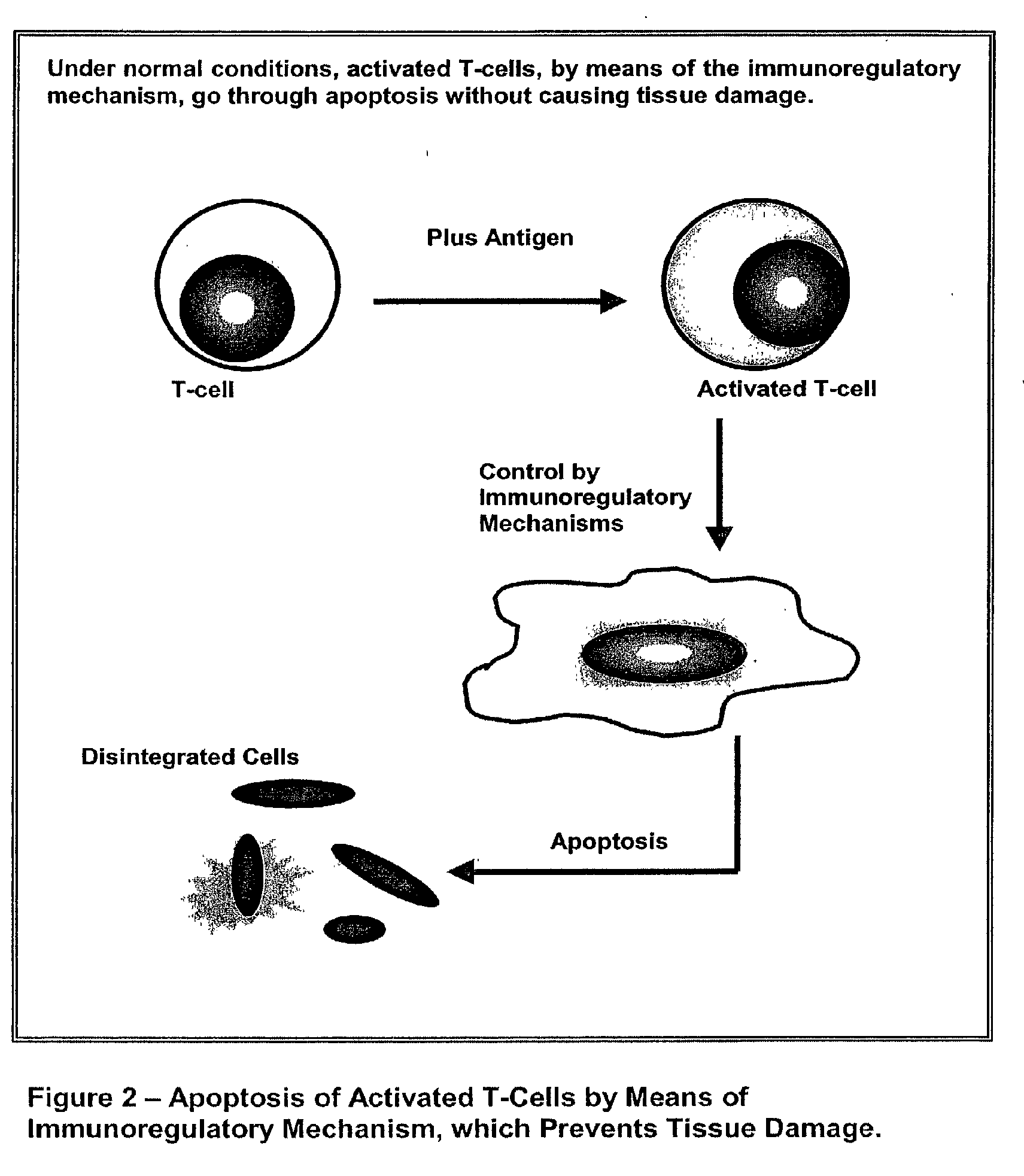Diagnosis of multiple sclerosis and other demyelinating diseases
a technology for demyelinating diseases and multiple sclerosis, applied in the field of other demyelinating diseases, can solve the problems of no definitive test available for diagnosis of multiple sclerosis, all three determinants, and many clinicians, and achieve the goal of identifying the likelihood and severity of a demyelinating diseas
- Summary
- Abstract
- Description
- Claims
- Application Information
AI Technical Summary
Benefits of technology
Problems solved by technology
Method used
Image
Examples
example 1
Materials and Methods
[0066] Blood samples from twenty subjects (8 males and 12 females) 32-48 years of age with abnormal MRI and evoked potential and diagnosis of possible MS were sent by different clinicians to our laboratory for neuroimmunological examination. For comparison, blood samples from 40 healthy, age- and sex-matched controls were included in this study.
[0067] Myelin basic protein (MBP), myelin associated glycoprotein (MAG), proteolipid protein (PLP), transaldolase, α-β-crystallin, and S-100 proteins were purchased from SIGMA (St. Louis, Mo.). Glial Fibrillary Acidic Protein (GFAP) was purchased from Boeringer Mannheim.
[0068] The following peptides were purchased from Research Genetics (Huntsville, Ala.):
Human MBP Peptides:87-106VVHFFKNIVTPRTPPPSQGK(SEQ ID NO:1)83-89ENPVVHFFKNIVTPRTP(SEQ ID NO:2) 1-11ASQKRPSQRSK(SEQ ID NO:3)200-211ANMQRQAVPTL(SEQ ID NO:4)Other peptides from 1-250 AAProteolipid Protein Peptides40-60TGTEKLIETYFSKNYQDYEYL(SEQ ID NO:5) 89-106GFYTTGAVRQI...
example 2
Enzyme-Linked Immunosorbent Assay (ELISA) Procedure
[0069] Enzyme-linked immunosorbent assay (ELISA) was used for testing antibodies against different neuron-specific antigens in the sera of patients with possible MS and control subjects. Antigens or peptides were dissolved in methanol at a concentration of 1.0 mg / ml, then diluted 1:100 in 0.1 M carbonate-bicarbonate buffer, pH 9.5, and 50 μl were added to each well of a polystyrene flat-bottom ELISA plate. Plates were incubated overnight at 4° C. and then washed three times with 20 mm Tris-buffered saline (TBS) containing 0.05% Tween 20, pH 7.4. The nonspecific binding of immunoglobulins was prevented by adding a mixture of 1.5% bovine serum albumin (BSA) and 1.5% gelatin in TBS, and then incubating for 2 h at room temperature, and then overnight at 4° C. Plates were washed as in the above, and then serum samples diluted 1:100 in 1% BSA-TBS were added to duplicate wells and incubated for 2 h at room temperature. Sera from patients ...
example 3
Detection of Neurologic Antibodies
[0070] Using ELISA assays, sera from 20 healthy subjects and 20 patients with possible MS were analyzed for the presence of IgG, IgM, and IgA antibodies against three neuron-specific antigens. The ELISA results expressed as mean O.D. at 492 nm are summarized in Table 3. The O.D. for IgG antibody values obtained with 1:100 dilution of healthy control sera ranged from 0.03 to 0.78, varying among subjects and antigens. The mean±standard deviation (S.D.) of these O.D. values, as shown in Table 3, ranged from 0.15±0.06 to 0.19±0.16. The corresponding IgG O.D. values from MS patients sera ranged from 0.06 to 2.27 and with the mean±S.D. of IgG values, which ranged from 0.58±0.49 to 0.75±0.73. For all three antigens, the differences between mean±S.D. of control sera and MS patients sera were highly significant (p<0.001). At a cutoff value of 2 S.D. above the mean of control values, levels of IgG antibody against these antigens were calculated in control an...
PUM
 Login to View More
Login to View More Abstract
Description
Claims
Application Information
 Login to View More
Login to View More - R&D
- Intellectual Property
- Life Sciences
- Materials
- Tech Scout
- Unparalleled Data Quality
- Higher Quality Content
- 60% Fewer Hallucinations
Browse by: Latest US Patents, China's latest patents, Technical Efficacy Thesaurus, Application Domain, Technology Topic, Popular Technical Reports.
© 2025 PatSnap. All rights reserved.Legal|Privacy policy|Modern Slavery Act Transparency Statement|Sitemap|About US| Contact US: help@patsnap.com



